|
|
Post by cobber on Apr 18, 2011 16:35:38 GMT 10
Don R. has provoked me   . This photo from ca 1908 is described as a Mobile Home owned by Romeo Lahey who was a Pioneer of voluntary conservation in Queensland . 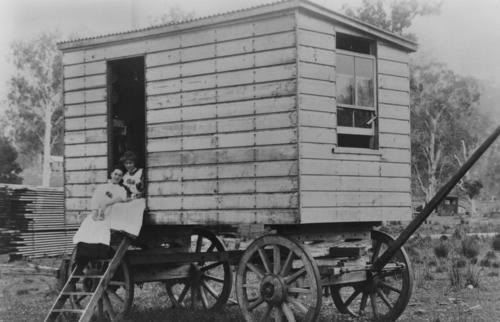 The photo comes from the State library of Queensland via Trove. This next one I will move to the Carapark thread later because I don't think I believe the caption  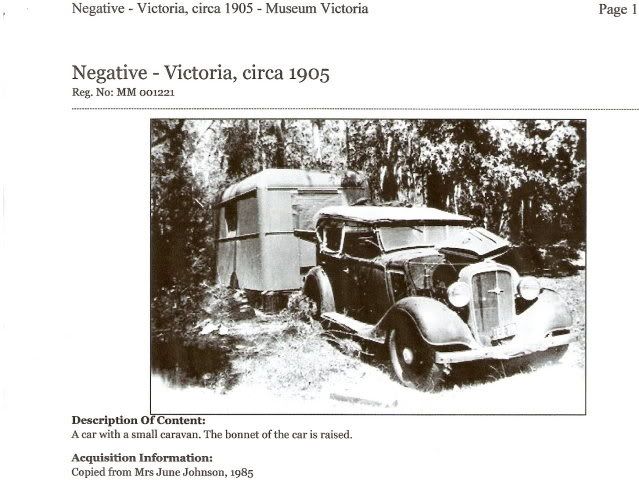 Cobber. |
|
|
|
Post by shesgotthelook on Jan 9, 2013 16:54:09 GMT 10
Finally got around to taking some pics of the settlers wagon on our property. These were used to live in while establishing new land & building a house for the family. 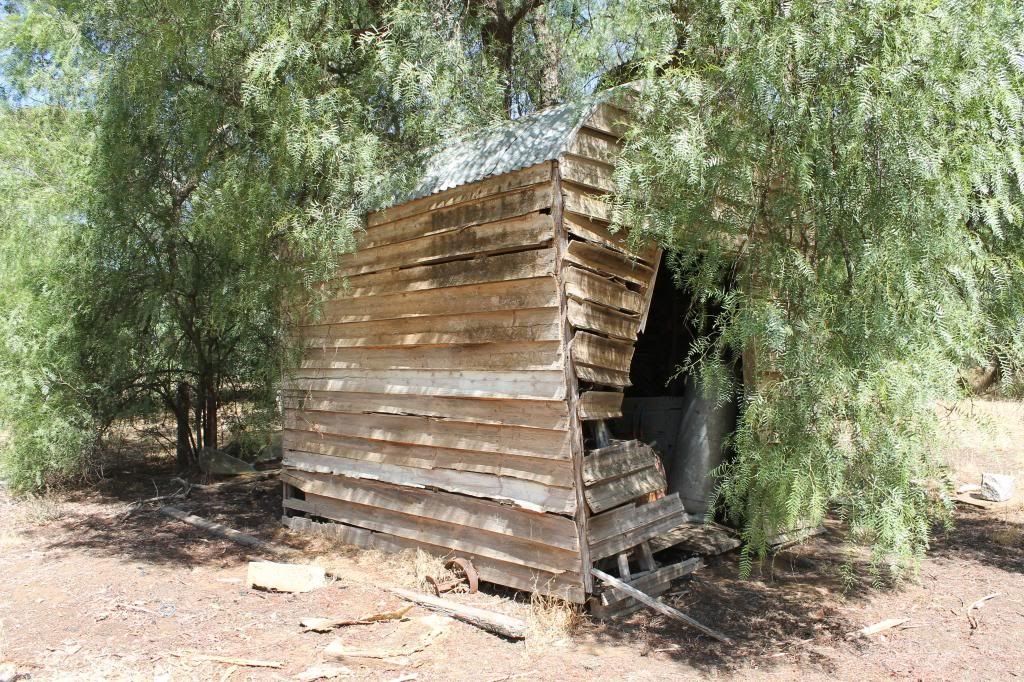 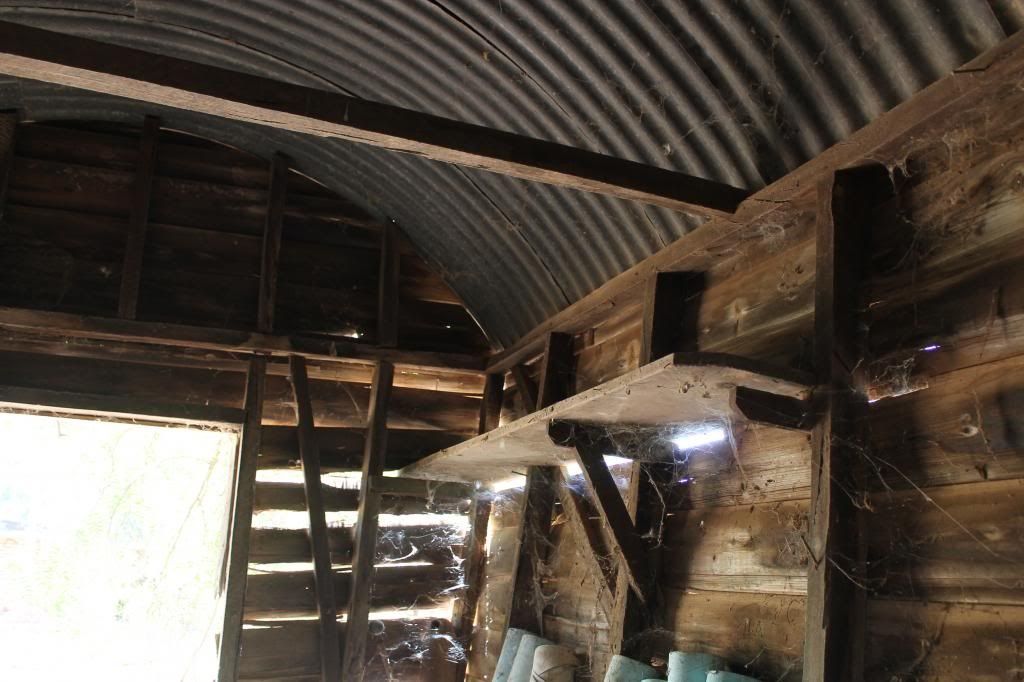 Front wheel? 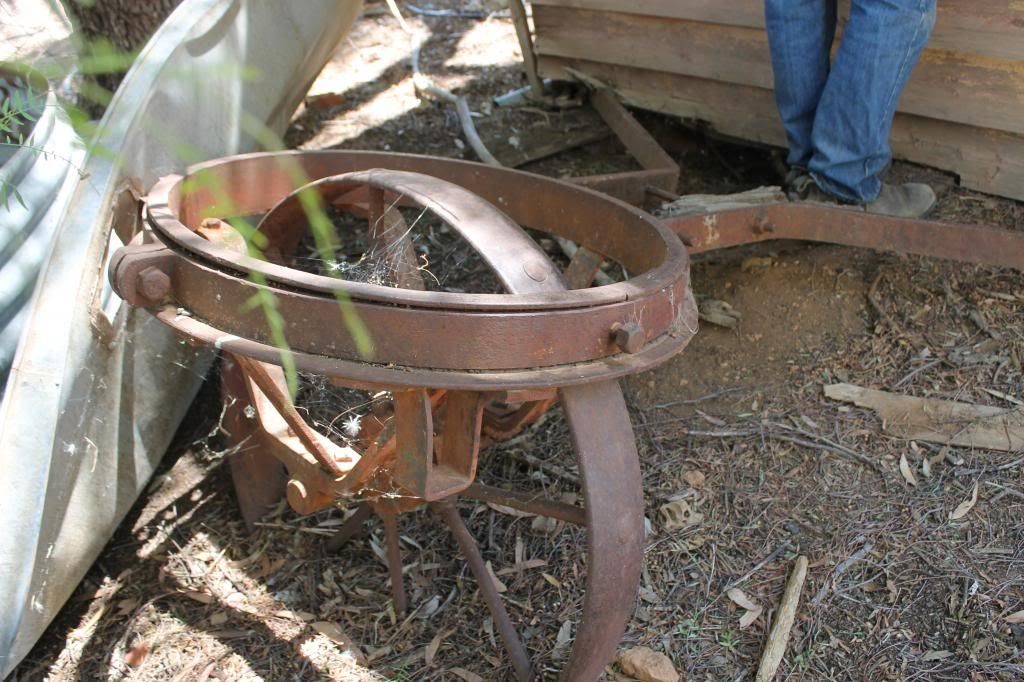 There are more pics but for some reason they didn't upload to PB Grrr |
|
mezmo
Full Member
  
Posts: 131
|
Post by mezmo on Jan 10, 2013 15:56:10 GMT 10
Hi shesgotthelook,
Wow, an original Australian House Trailer ! What a great little
piece of history for your property. Are you going to try to conserve it?
The other pics would be interesting if possible.
Cheers,
Norm/mezmo
|
|
|
|
Post by shesgotthelook on Jan 11, 2013 16:37:55 GMT 10
Hi Norm, restoration? hmmm, not sure if this would be feasible or if I have the carpentry & boilermaker skills! There is a woman not far from us who has restored several of them. Very hard to find anything on the web about them. Board goes under whole wagon & somehow connected at front. 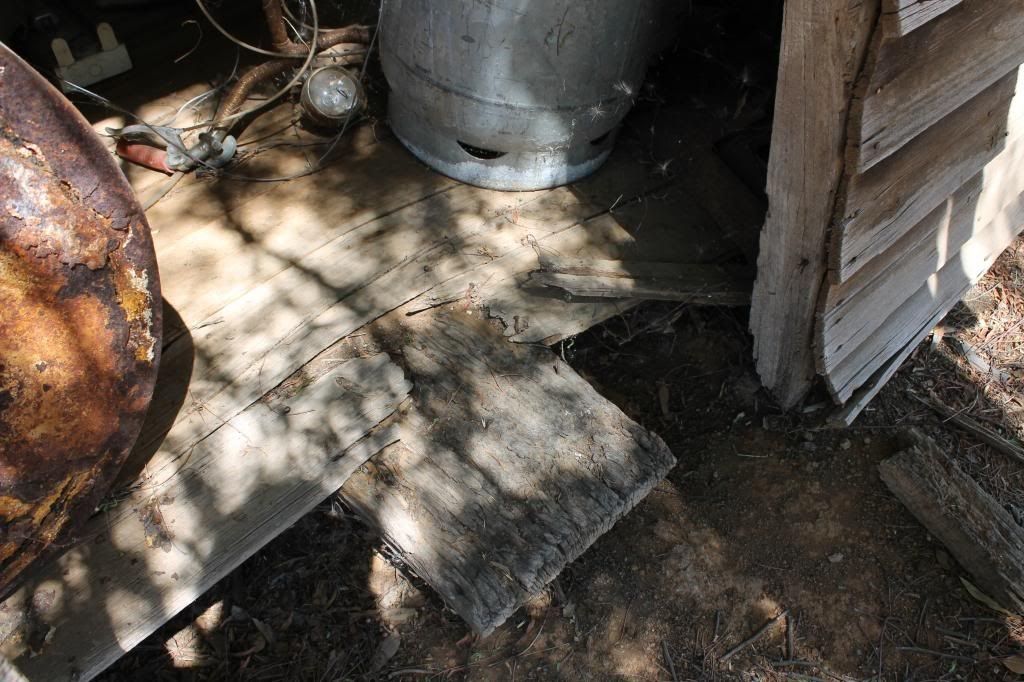 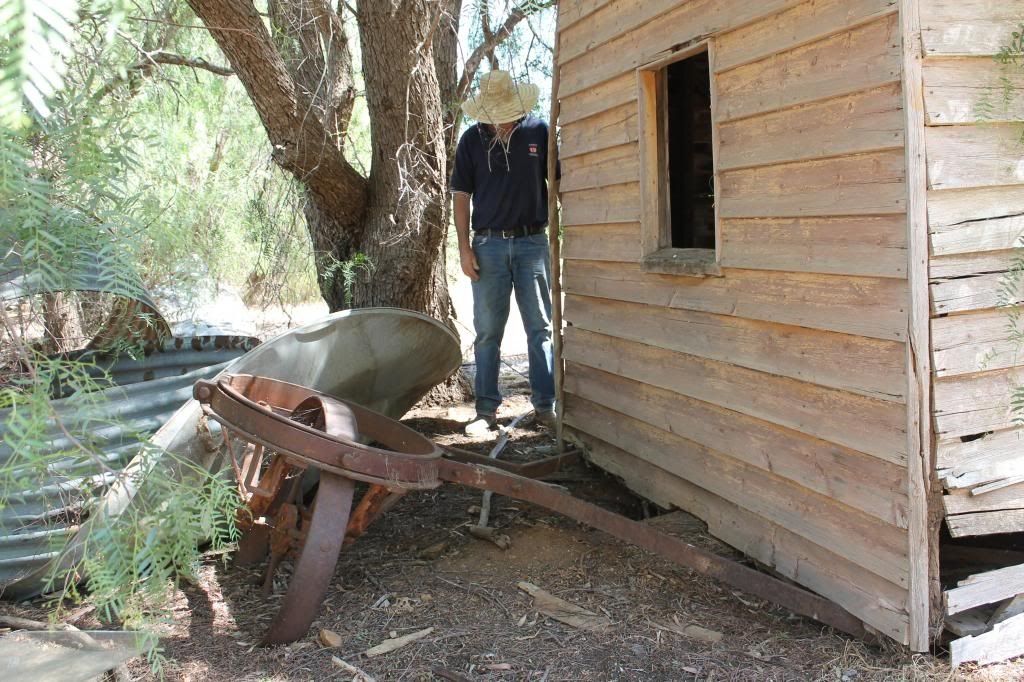 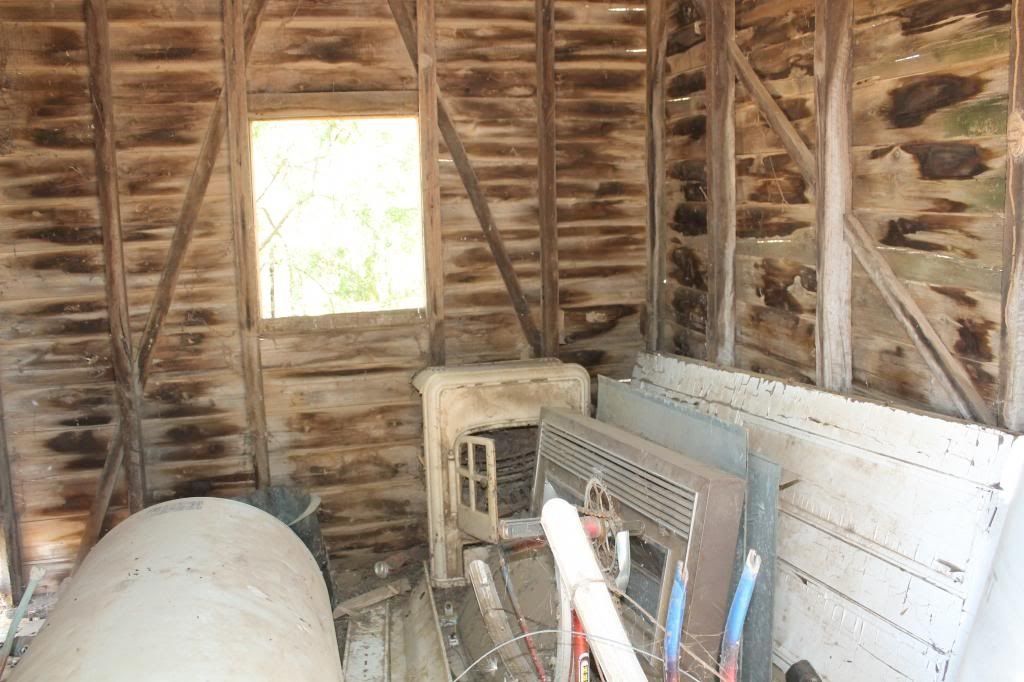 |
|
|
|
Post by Don Ricardo on Jan 11, 2013 20:31:29 GMT 10
Hi Shesgotthelook, What a great V V treasure to have. Definitely worth preserving and even restoring for posterity. And that jockey wheel!       That is fantastic! I presume the wheel assembly can revolve around in its "collar"? I also presume that the van was set up to be towed by a horse? Do you know how the horse was harnessed to it? There is a similarish era caravan at Chrystie's museum at Tocumwal, but it is a fairly pedestrian 4-wheel variety, not a 3-wheel van like yours, and definitely doesn't have that cool jockey wheel! Don Ricardo |
|
|
|
Post by cruisindoug on Jan 12, 2013 9:15:34 GMT 10
Nice treasure to have on your property, definately worth preserving if you can .. I reckon the date on the first post from the Vic museum is a bit out, that car don't look like a 1905 model to me  |
|
chubi
Full Member
  
Posts: 158
|
Post by chubi on Jan 12, 2013 10:13:17 GMT 10
Nice treasure to have on your property, definately worth preserving if you can .. I reckon the date on the first post from the Vic museum is a bit out, that car don't look like a 1905 model to me  Defitely, its American circa 1930 Doug. Btw, nice meeting you at Booral servo last week, hope your trip was a good one! |
|
|
|
Post by shesgotthelook on May 22, 2013 22:42:34 GMT 10
Just got a bit excited, was doing search for Gypsy caravans & came across this! vintagecaravans.proboards.com/index.cgi?board=general08&action=display&thread=9026Now I know what ours is supposed to look like. I always thought that collared wheel was an add on from another farm implement (we do have other wheels like it lying around) but it's obviously original. Excitement over, bedtime 
Editorial note: The post referred to by Shesgotthelook above has been reproduced further down this thread here. |
|
|
|
Post by cobber on May 23, 2013 8:18:24 GMT 10
G'day SGTL, I can understand you getting excited over that discovery  When we use the two different search engines on this forum they sometimes turn up all sorts of forgotten but interesting stuff aye? ........ takes a bit of practice.... and patience .... and determination.... and disappointment sometimes  ... but worth learning how to use them....... I reckon  So what now, you going to restore that old wagon on your property  Cobber  |
|
|
|
Post by shesgotthelook on May 23, 2013 15:19:58 GMT 10
" So what now, you going to restore that old wagon on your property? "  If you come & help me, & better find a blacksmith & a cooper too ;D I have plenty of old harness too so if I could find a pic of one with the horse attached, I'd have some idea of how it all worked. |
|
|
|
Post by shesgotthelook on May 23, 2013 16:35:37 GMT 10
There is one at Swan Hill Pioneer settlement, but again, no horse.   |
|
mezmo
Full Member
  
Posts: 131
|
Post by mezmo on Nov 29, 2013 12:45:41 GMT 10
When I saw this thread, a while ago, I was intrigued by the three wheeled shepherd hut-like vehicles shown on this thread. They seemed quite a novel approach to housing - as seen from our times looking back. [also in this thread here: vintagecaravans.proboards.com/index.cgi?board=general08&action=display&thread=9026 ] I just came across this item by chance today when looking at a shepherd's hut website: shepherdhuts.co.uk/ . In one of their history pages is this : shepherdhuts.co.uk/page19.htmShowing this: www.shepherdhuts.co.uk/userimages/hosier%20hut%201%20copy.jpg It is a "bail" aka a portable milking shed, used for an open air style of dairying in the UK, invented in the later 1920s. So I wonder if the ones shown in this thread are of a similar origin and intended use, or if they were just adapted from that into use as an early caravan ? The iron chassis parts certainly look similar, especially the front single turning wheel. Cheers, Norm/mezmo P.S. Just by their looks, these three wheel vans have to have been derived from the UK style shepherds hut's and road worker's huts [pretty much identical units]. The simple minimal design and especially the curved/bow corrugated sheet metal roof that they share in common leads to that conclusion. |
|
|
|
Post by Don Ricardo on Oct 26, 2016 10:16:43 GMT 10
Morning all, The following article was published in that august newspaper, the Braidwood Dispatch and Mining Journal on Saturday, 16 January 1909 (page 3). Although it is a report on a caravan belonging to some people in France, it must count as amongst the first articles in an Australian newspaper about caravanning in our modern sense - a caravan in which one could live and sleep, either towed by, or powered by a motor: 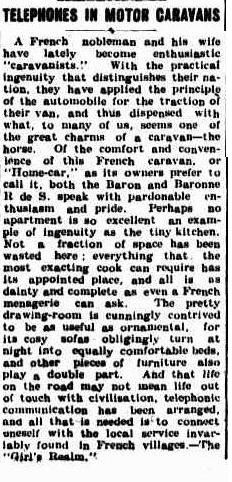 (Source: National Library of Australia nla.gov.au/nla.news-article100791087 ) It is worth reading in full, just for the language and descriptions, but a couple of things stand out. One is the use of the word 'caravanists' to describe the people owning the van. But another is the comment: "...they have applied the principle of the automobile for the traction of their van, and thus dispensed with what, to many of us, seems one of the greatest charms of a caravan - the horse". It isn't clear from the article whether the vehicle in question was a 'trailer caravan' (towed behind a car) or a 'motor caravan' (mounted on a car chassis), but perhaps the reference to it being a 'home car' suggests it was the latter. Perhaps what is most astonishing, though, is this: "And that life out on the road may not mean life out of touch with civilisation, telephonic communication has been arranged, and all that is needed is to connect oneself with the local service invariably found in French villages." Just goes to show that very little in the modern caravan is new, not even the mobile telephones that even most of we 'vintage caravanists' now carry. Don Ricardo |
|
|
|
Post by Don Ricardo on Sept 18, 2017 0:12:32 GMT 10
Photos of a horse drawn settlers'/shepherds' hut at The Millewa Pioneer Forest and Historical Village, and posted by Millsy here on 11 October 2011:On a cruise around the Murray Mallee last week we stumbled across a little historic village, between Renmark and Mildura. It had two vintage vans. This one was the older of the two, and as the notice said, it has been restored. Looks like the tyres are the only things missing! And that jockey wheel is a bit 'agricultural'. I would be replacing it with something a bit smaller I think, if it was mine. My boot is not that big! The notice had four names. Two of them being a 'drovers wagon' or a 'gypsy caravan'. I like to think of my old van as 'gypsy van'. It also will have the bare minimum of funiture when finished - a simple bench and a bed. I'll leave plenty of open floor space, just like this old van. Not sure about putting in a cast iron stove though! 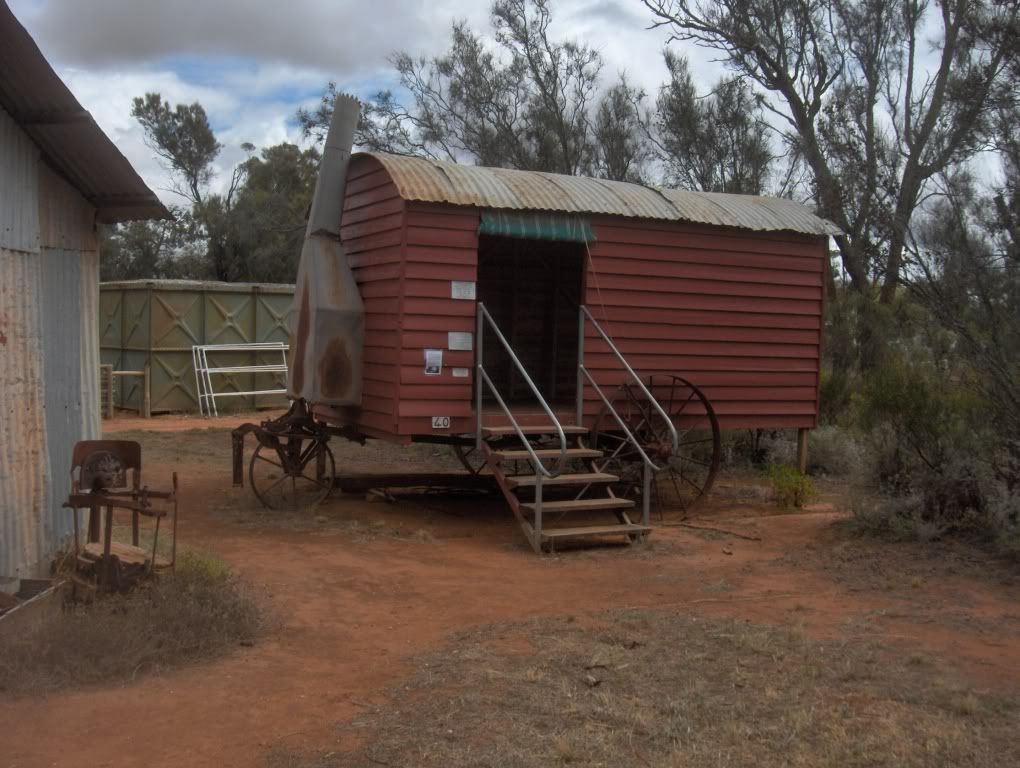  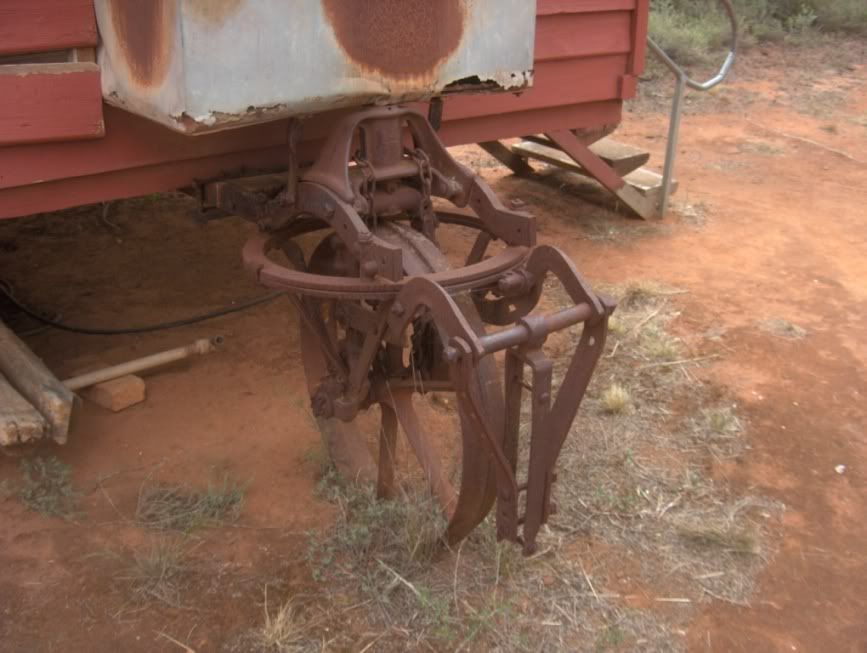 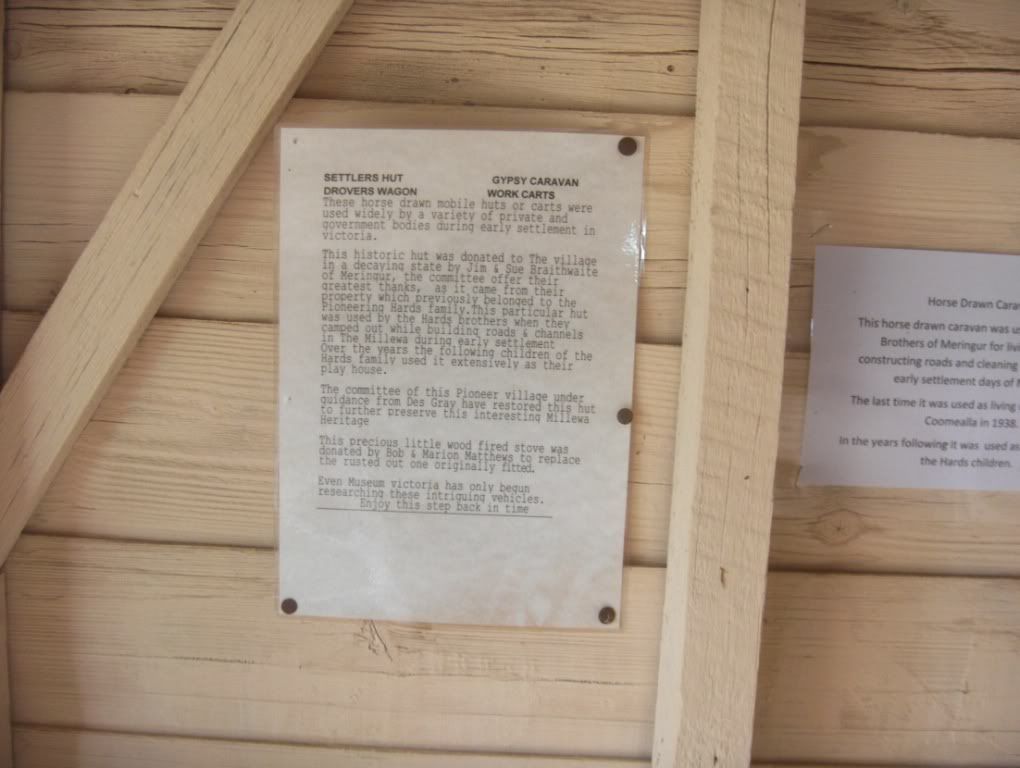 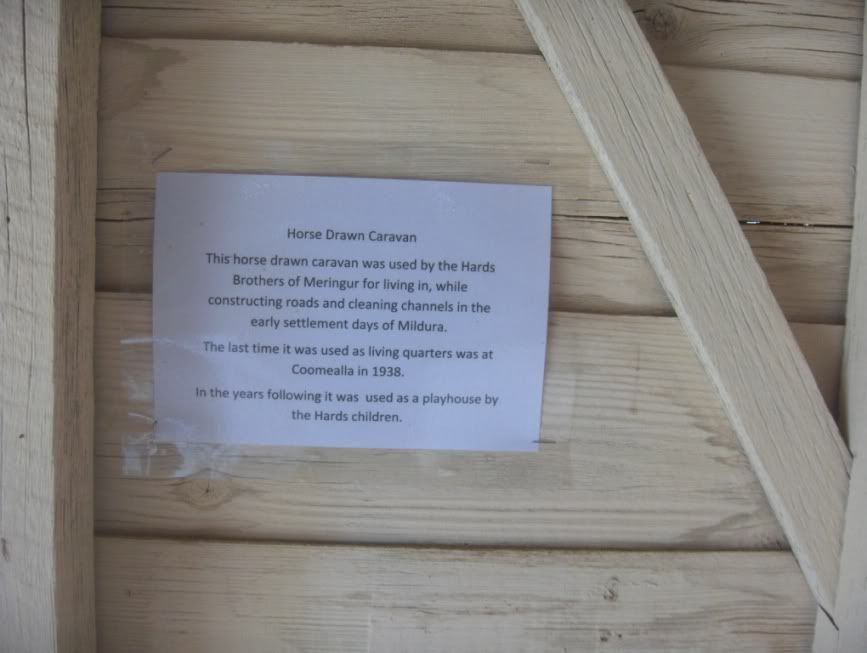  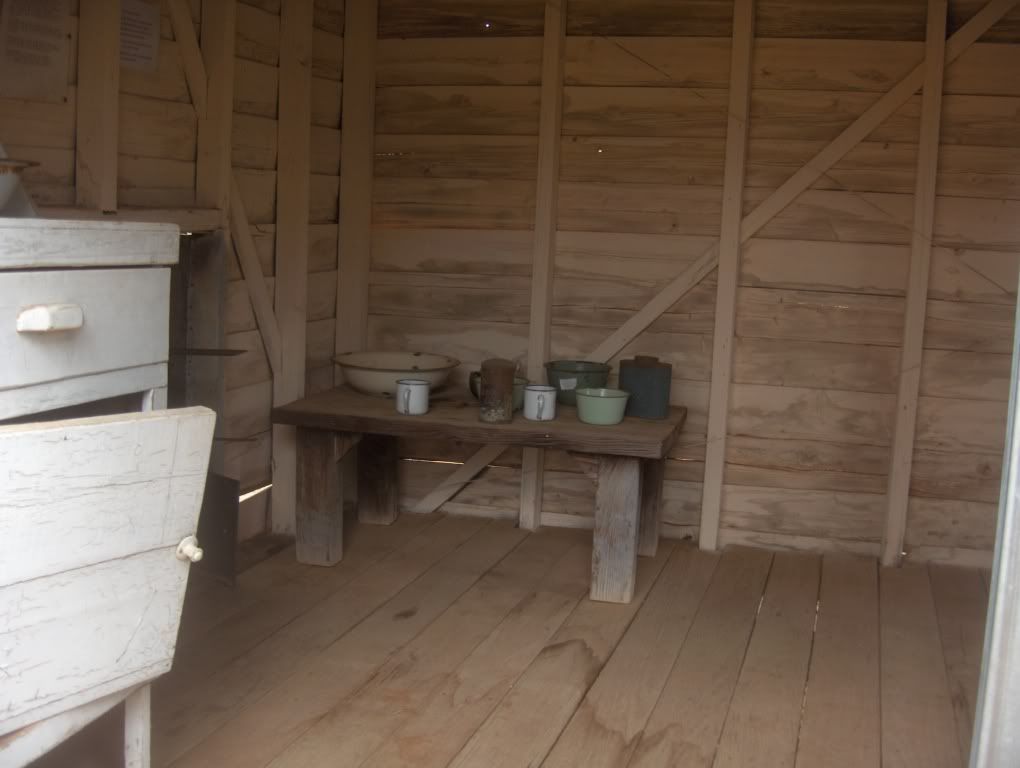 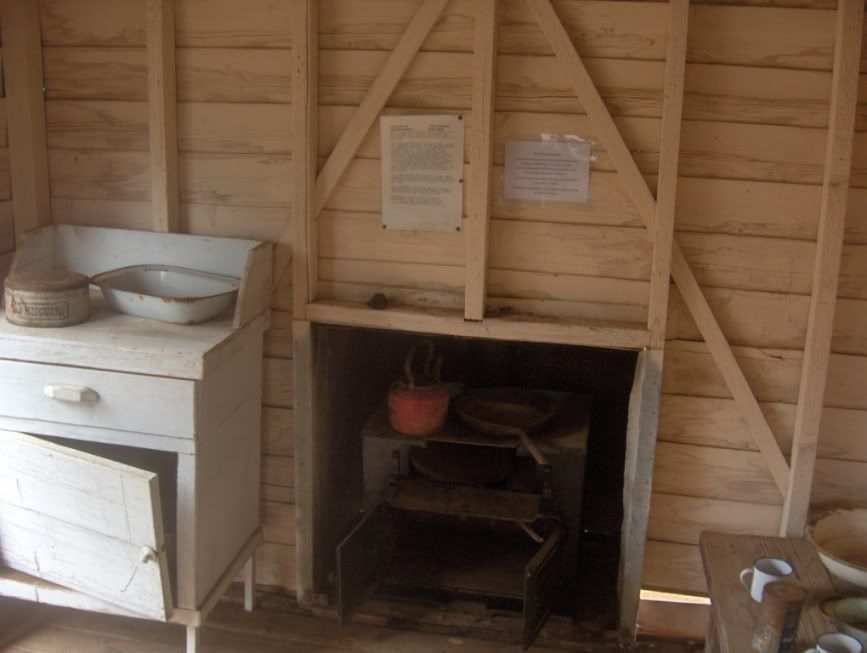 
The signage does not indicate exactly when this hut was constructed, but it was used during the opening up of The Millewa area for settlement, which occurred between 1870 and 1920. This, plus the fact that the hut was horse drawn, suggests that it is pre-1920 at the very least, and probably earlier. It can be compared to Shesgotthelook's settlers' hut shown higher up this thread. Don Ricardo
|
|
|
|
Post by Don Ricardo on Dec 4, 2017 9:49:45 GMT 10
Photo of the McDonald family on a camping trip in the Yan Yean district, Victoria, circa 1905: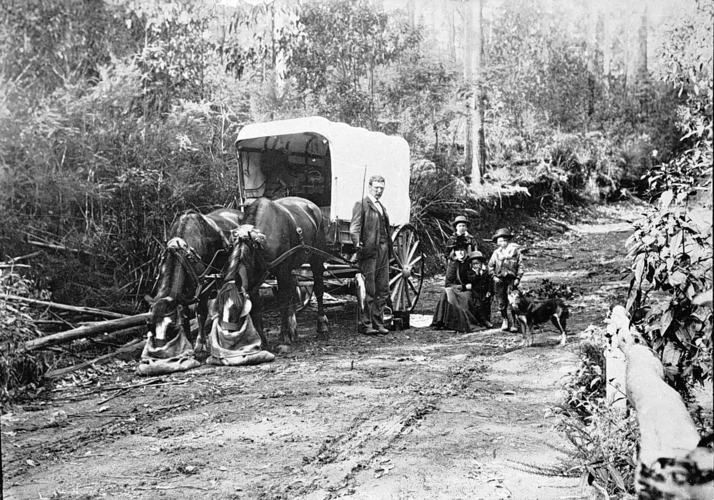 (Source: Museums Victoria collections.museumvictoria.com.au/items/770523 ) According to the description provided by Museums Victoria, the photo shows the family having stopped on a bush road to re-fuel their tow vehicle(s). (That's my rough translation...    ) The photo is of particular interest to me, because the Yan Yean district is about 5 kms from where I live. While the photo was taken prior to the motor car era, it does illustrate that families used their horses and carts for recreational and camping purposes. Thanks to the Lost Country Victoria Facebook page for posting this photo. Don Ricardo
|
|